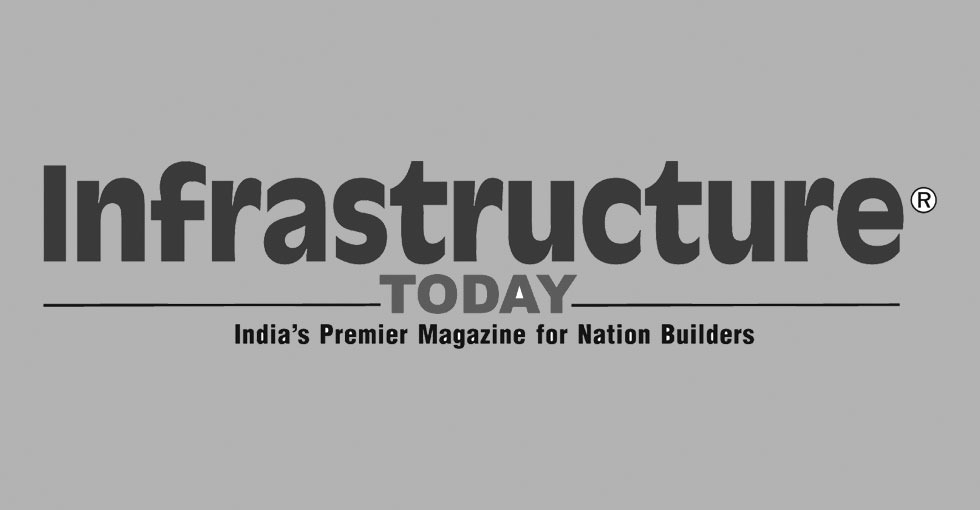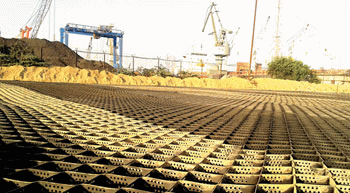A knowledge and strategy paper on ‘Sustainable Infrastructure with Plastics’ has been released at the national conference organised by FICCI jointly with Department of C&PC, and Organization of Plastics Processors of India (OPP) at the FICCI headquarters in New Delhi.
FlashNews:
South Asia Must Scale Hydro, Storage and Power Trading for Grid Integration: CEA Chief
India Can Save $204 Billion in Infra Pipeline with Better DPR Planning: Vector Consulting
Prime Minister Modi Inaugurates Skyroot’s Rocket Factory; Company Targets $21 Billion Launch Market
IWAI Signs ₹13.5 Billion MoUs to Boost Ganga Waterway in Uttar Pradesh
MOVIN Launches Healthcare Logistics Vertical to Tap India’s $638 Billion Industry
Atlanta Electricals Secures ₹2.98 Billion Transformer Orders from GETCO
Waaree Group Wins 10 MWh BESS Order in Tamil Nadu, Expands Domestic Storage Manufacturing
Cabinet Approves ₹27.8 Billion Rail Multitracking to Boost Gujarat and Maharashtra Connectivity
BC Jindal Group Secures 150 MW RTC Power Deal with SECI
India’s Data Centre Revenue to Hit ₹200 Billion By FY2028, Driven by AI, Cloud and 5G: Crisil Ratings
Sanchar Saathi Recovers 50,000 Phones in October; Crosses 700,000 Nationwide Since Launch
Akasa Air Expands Northeast Connectivity, Adds Dibrugarh as 32nd Destination
Ministry of Power Advances India Energy Stack with Taskforce Review of Strategy and Architecture
Vaishnaw Stresses Industry-Aligned Skilling to Power India’s Digital and Electronics Growth
DGCA Issues Urgent Advisory as Ethiopian Ash Cloud Enters Indian Airspace
DFCCIL Freight Operations Surge 48% as Corridors, Terminals Expand
SMFCL Board Clears $3 Billion Borrowing Plan to Accelerate Maritime Infrastructure Financing
Air India Restores Codeshare with Air Canada to Expand India-Canada Flight Network
Indian Railways Freight Loading Surges Past 1 Billion Tonne Milestone This Fiscal
There is huge potential for growth in the air cargo market
The reactions are positive and industry is also quite optimistic on the introduction of NCAP 2016. The objective of the government through NCAP is to establish an integrated ecosystem enabling significant growth of the civil aviation sector, which in turn would promote tourism, increase employment and lead to balanced regional growth.
The Union Budget has a progressive outlook
The Union Budget for fiscal 2018 has a progressive outlook and encourages investments with initiatives like affordable housing being given infrastructure status to avail new funding avenues. The Budget has expanded the scope for the capital and bond markets.
We offer a breadth of experience under a single roof
Pipeline generation for increasing the visibility of sales. The Division had an order in hand of pipeline of Rs 63.88 crore as of 31st March 2016 , as compared to Rs 48.70 crore in 31st March 2015, an increase of 31 per cent.
The impact of GST could lead to reduction of 5percent in overall logistical costs
The expected implementation of GST will boost the demand for warehousing, 3PL solutions and multimodal services, areas where TCI has a strong market presence.
GST will reduce the share of the unorganised sector in warehousing
The GST is a value-added tax that will replace all other indirect taxes in India. One purpose of the GST is to make taxes ´destination´ based rather than origin based, or ´efficiency´ based rather than ´regulation´ based.
The warehousing sector is going to experience a sea change in its structure
With the total warehousing space requirement in the country´s top seven markets expected to grow from 621 mn sq ft in 2016 to 839 mn sq ft by 2020, the warehousing sector has shown tremendous traction in the past couple of years. Further, investment in warehousing can provide an opportunity of realising returns in the range of 10-24 per cent per annum.
Hidden Benefits
Notwithstanding the tremendous potential to expand revenues, general lack of awareness about the benefits of using geosynthetics might delay projections set by firms in the sector. However, despite challenges, growth is eventually inevitable.
Ashoka Buildcon targets order inflow of Rs 50 billion
The company has been the biggest beneficiary of an uptick in orders in roads, due to its dual business exposure and access to Rs 14 billion of cash inflows over FY2016-18E. The company is targeting order inflow of Rs 40-50 billion in the roads segment and Rs 5-8 billion in the power segment.
Towering Heights
In India, for every 10 per cent of the population using basic services such as voice and SMS, the national GDP increases by 0.5 per cent; a similar expansion of Internet and other non-voice communication or data adds 1 per cent to GDP, according to government figures available with the country´s Department of Telecommunications (DoT).










